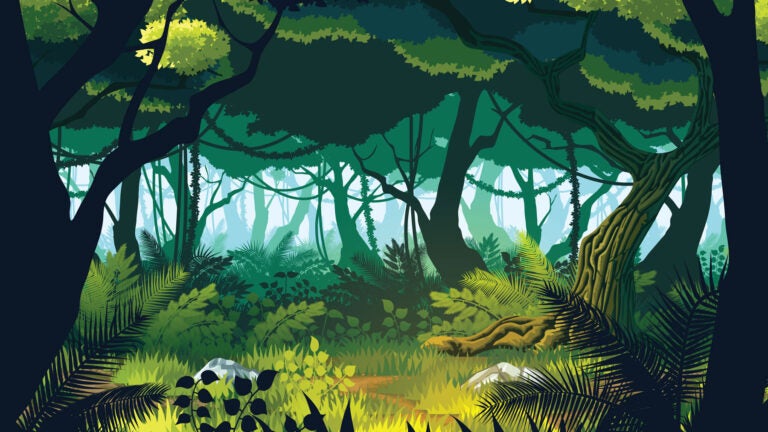
Infectious disease expert Paula Cannon of Keck Medicine of USC says scientists remain uncertain exactly how the coronavirus was transmitted from animals to humans. (Illustration/iStock)
Disease detectives investigate how COVID-19 spread from animals to humans
The coronavirus may have started with bats, but scientists at USC and beyond are researching how it ended up infecting humans.
Since the outbreak of COVID-19 began in China a few months ago, scientists have been working to determine the original source of the illness and how it spread to people.
Paula Cannon, Distinguished Professor of Molecular Microbiology and Immunology at the Keck School of Medicine of USC, specializes in how viruses are transmitted. She said it’s likely the coronavirus responsible for the ongoing pandemic first infected wildlife and then infected people.
“We are being reminded by nature that we are playing Russian roulette with the viruses out there,” Cannon said. “Humans are increasing the odds of diseases happening as we move into wild areas and catch wild animals. We are creating the circumstances where it is only a matter of time when this was going to happen, and it will only be a matter of time before it happens again.”
Diseases that transmit from animals to people — called zoonotic diseases — are common around the world. More than 6 out of every 10 infectious diseases in people can be spread from animals, according to the Centers for Disease Control and Prevention, and 3 out of every 4 new infectious diseases in people are from animals.
How COVID-19 spread and what it means for future pandemics
Scientists believe the new coronavirus was transmitted from animals to people at a marketplace in Wuhan, China. The virus quickly spread. Since then, more than 2.7 million people worldwide have been diagnosed with the respiratory illness and more than 194,000 people have died, according to an online infection count maintained by Johns Hopkins University of Medicine’s Coronavirus Resource Center.
It may be once in 100 years that the alchemy is right to infect humans, and when it does, it takes off like wildfire.
Paula Cannon
Similar outbreaks have occurred before, including Middle East respiratory syndrome (MERS) and severe acute respiratory syndrome (SARS) several years ago. Evidence suggests that MERS spread from camels to people, while SARS likely occurred when a bat-infected civet cat passed the virus to humans, Cannon said. Bats were also believed to be the original carrier of Ebola virus outbreaks that infected people in Africa from 2014 to 2016 and also back in 1976.
Recent studies in Nature, including one on March 17 and another on March 26, indicate the new coronavirus genetically resembles other coronaviruses that had originated in bats. Scientists are also studying whether the illness spread to other animals before it sickened humans. Cannon said that’s because part of the coronavirus’ genetic code looks similar to viruses found in bats. There’s also a signature resembling pangolin.
“There are hundreds of coronaviruses, and a large number of them are found in bats,” she said. “Based on what happened previously with SARS and MERS, scientists are very concerned that another virus will make the jump from bats to humans. It may be once in 100 years that the alchemy is right to infect humans, but when it does, it takes off like wildfire.”
This story was updated on April 24.



